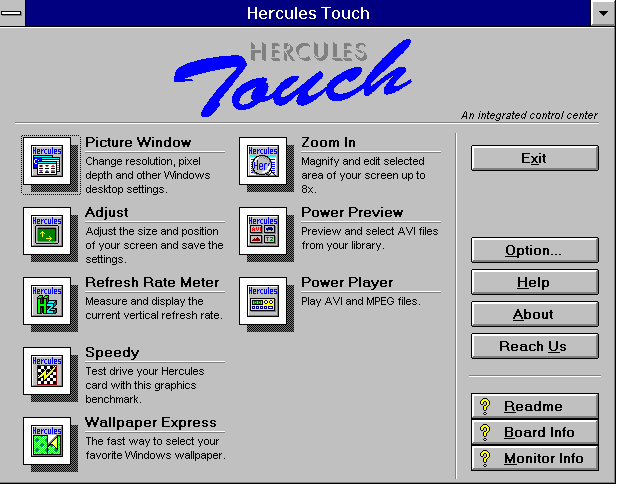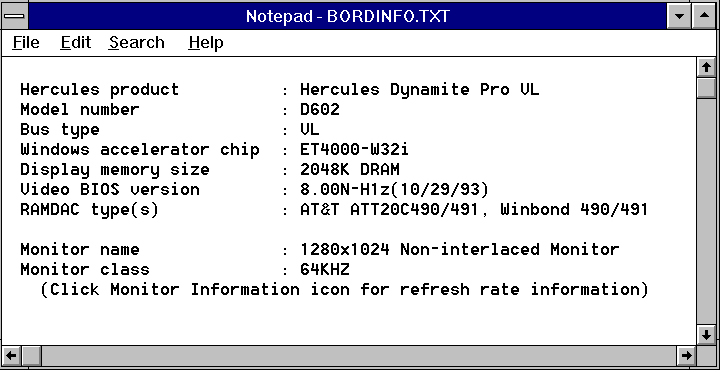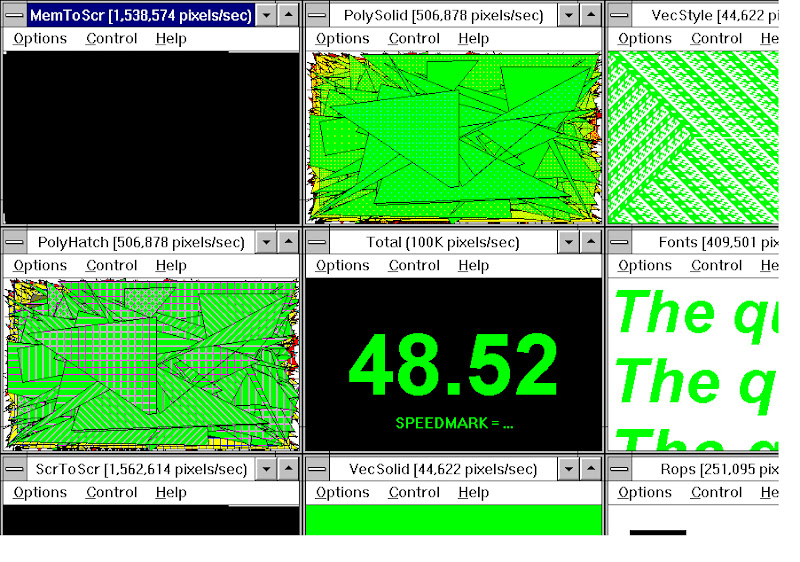I tried random jumper configurations on this card, 15 of them in fact, but I couldn't get this VGA card stable @ 50 MHz mobo bus speed. Perhaps I should have removed the VLB IO controller, and used an ISA IO controller instead? However, this VLB IO controller + a Trident VLB VGA card @ 50 MHz bus speed worked OK, so I'm a bit disappointed that this Hercules VGA card couldn't perform in the same way. I thought that a Trident outperforming a Hercules Tseng ET4000 Pro card could only occur inside some kind of warped alternate universe.
If you want the DOS, Windows 3x and Windows 95 software, it's here and here. That's disk 1 and 2, version 4. I hope it's the latest version. It should be, I think. I just archived the software using the .7z format. There's nothing fancy about it in terms of file structure. Just a couple of self exstracting .exes. Please note that on disk 2, there's an upwin.bat file which will update your Windows 3x driver files.
In order to adjust the refresh rates inside Windows 95, you have to install DOS software (from the links above). This will install a DOS utility called SETCRT.exe. You can also pick your monitor type. On my LCD, the highest resolution I could get was 1024x768 @ 60 Hz. The card will not work at 60 Hz @ 1280x1024, because it insists that this resolution must be displayed in interlaced mode @ 87 Hz. This cannot be done on my LCD.
It's a shame that some VLB cards do this. Some don't however. I've tested a bunch of these VLB cards now, and at least a third are sensible enough to offer you 60 Hz @ 1280x1024. But not this one. The weird thing is that if you look at the info image below (2nd pic down), it thinks the monitor is non-interlaced 1280x1024, which it is. So why can't the card can't cope with that resolution + refresh rate?
Using the VGA card in Windows 3x. Hercules Touch - its control panel.

Info about the card, in Windows 3x.

Speedy, the card's benchmarking utility. This image appears incorrect. A lot of the colours and imagery have disappeared.




